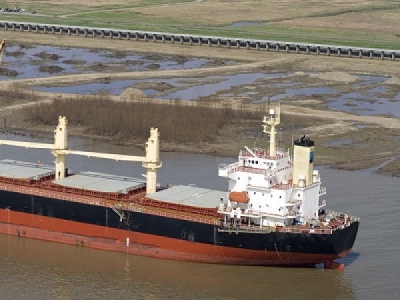
Posted on July 31, 2017
By US Government Accountability Office
What GAO Found
From 2010 through 2015, 13 Mississippi River ports that GAO selected for review varied individually in terms of the amount, type, and trends in traffic handled. As a group, these ports primarily moved a mix of agricultural commodities (corn, soybeans, and rice); petroleum products; and crude materials (such as sand and gravel, among others). However, the ports varied individually, with some primarily moving agricultural commodities, and others moving a variety of commodities. These ports also varied in the quantity of goods transported through them, ranging from less than 1-million tons to more than 10-million tons per year. The amount of freight moved through each port tended to fluctuate each year due to various factors, such as weather, crop yields, and export markets.
A majority of the stakeholders GAO interviewed, as well as U.S. Army Corps of Engineers (Corps) officials, stated that funding constraints limit the Corps’ ability to fully dredge the 13 ports’ harbors, which can affect freight movement. According to local Corps officials, they received about $13.1 million of the $20.6 million needed to fully dredge the 13 ports’ harbors in fiscal year 2016. Some stakeholders told GAO that smaller ports are negatively affected by the Corps’ emphasis on the amount of cargo moved (measured in tons) when making decisions about which harbors to dredge. Congress has directed the Corps to consider harbors’ significance and to conduct an assessment of harbors’ use and benefits—considering factors beyond tonnage—to inform its allocation of dredging funds. Corps officials said they have not conducted such an assessment due to funding constraints, and raised concerns about the cost-effectiveness of conducting such assessments. However, the Corps has developed some tools that may help it assess inland harbors’ significance, use, and benefits. For example, Corps officials explained that they have a tool that allows them to track the amount and type of cargo moving through harbors and to estimate the value of cargo at risk if a harbor loses depth. However, a Corps official noted the cargo-at-risk metric was based on deep coastal harbors and would need to be adapted for inland harbors. A senior Corps official agreed that it could be useful to inform Congress of the Corps’ existing tools and capabilities and the resources needed to adapt these tools and capabilities to address the statutory requirements related to allocating dredging funds.
Many of the stakeholders GAO interviewed said that before considering alternative-funding options, the federal government should make more use of the current mechanism for funding dredging: the Harbor Maintenance Trust Fund. With regard to three other potential options for funding dredging—user fees, state and local contributions, and use of the Inland Waterways Trust Fund (which currently funds new construction and major rehabilitation of locks and dams as well as other channel and waterway improvements)—stakeholders identified challenges to their use. In particular, they noted the financial effects of these options on users, state and local governments, and the Inland Waterways Trust Fund. However, some stakeholders identified benefits related to these options, such as benefits from industry paying user fees for its infrastructure use, and state and local governments contributing funds to meet the dredging needs of harbors in their jurisdiction.
Why GAO Did This Study
Inland ports on the Mississippi River between St. Louis and Baton Rouge enable shippers to move millions of tons of agricultural and other bulk commodities. However, these ports’ harbors can accumulate sediment that reduces their depth, width, and length, making it difficult for vessels to move. To address this, the Corps routinely dredges the harbors.
Congress included a provision in statute for GAO to review dredging issues for ports in this region. This report addresses: (1) freight traffic of selected ports since 2010; (2) stakeholders’ views on any challenges presented by the current federal funding approach to dredging inland harbors; and (3) the benefits and challenges of alternative options to fund dredging.
GAO reviewed Corps’ 2010–2015 port traffic data for 13 of 18 inland ports in the region. Data for 2015 were the most recent available. GAO also interviewed Corps officials, industry stakeholders, and officials from 11 of 13 ports selected to include a range in terms of cargo handled, location, and dredging history. GAO conducted a literature search and interviewed 52 industry, port, and other stakeholders and experts about alternative options to fund dredging.
What GAO Recommends
The Corps should inform Congress whether it can adapt its existing tools to address factors for allocating funds from the Harbor Maintenance Trust Fund, and the resources needed to do so. The agency concurred with the recommendation, with comment, and provided technical comments that were incorporated, as appropriate. The complete report can be viewed at https://www.gao.gov/assets/690/686127.pdf
Source: GAO





